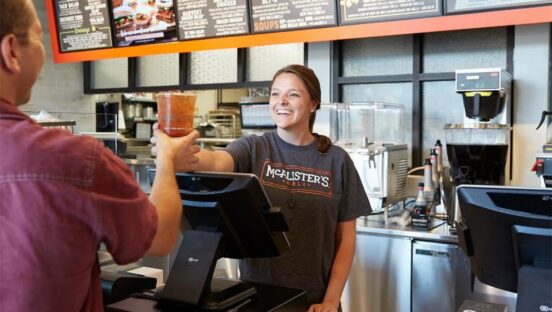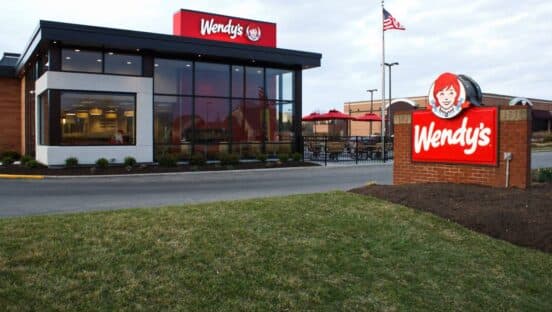Loyal customers are a business’s lifeblood. They drive recurring revenue, spread word of mouth through their social networks, and form the bedrock of business stability in a tumultuous economy. But to keep loyal customers, brands must constantly find innovative and novel strategies to engage them uniquely. Today, subscription models can add to the arsenal of customer engagement tools. By incorporating subscription programs, brands can unleash the full potential of customer loyalty, amplifying engagement, satisfaction, and overall success.
Understanding Subscriptions for Restaurants
Restaurant subscription models allow customers to embrace a world of exclusive services and products through convenient recurring fees. That means gaining access to enticing benefits, discounted meals, complimentary delivery, early access to irresistible promotions and more. Beyond the instant gratification of discounts, subscription programs create an emotional, exclusive draw for consumers to join loyalty programs eagerly.
Blending savings and added conveniences strengthens the bond of loyalty, creating an environment where customers feel valued and appreciated. Furthermore, subscription models enable the collection of valuable user data, paving the way for a personalized dining experience tailored to individual preferences. Personal touches—like tailored promotions on frequently purchased items—resonate deeply with customers, with 86 percent of buyers expressing their willingness to invest more in such enhanced experiences.
Brands can still increase revenue during slow periods by increasing daypart targeting or limited-time “product pass” promotions. Additionally, subscriptions encourage customer retention and foster emotional connections between guests and the brand.
According to C+R Research’s 2022 survey, the average monthly spend for consumers who join subscription programs is more than 2.5 times the amount they initially estimated. Similarly, a 2021 report showed that Americans spent 15 percent more on subscription services than in 2018, meaning each American is spending an additional $430 yearly! Subscriptions and membership programs are a must-have for all brands.
So, how are brands experimenting with different subscription models? There are a few models that we see showing signs of success:
- Unlimited Item Subscriptions, offering a high-frequency, traffic-driving product like free coffee.
- Meal Kit Subscriptions, providing customers with pre-packaged meal kits they can cook at home.
- Delivery Subscriptions for free or discounted delivery.
- Dining Subscriptions, which discount or give away meals at participating restaurants.
A few successful examples of brands with subscriptions are:
- Olive Garden’s Never-Ending Pasta Bowl: Olive Garden allows guests to purchase a limited number of passes (23,000 on August 23, 2022), which offers unlimited servings of all pasta combinations, sauces, and toppings for $100 at eight weeks, or $300 for the entire year. Never Ending Pasta Bowls sell out in a matter of minutes.
- McAlister’s Tea Pass: Nationally recognized for its teas, McAlister’s Reward Members can purchase a $6.99 tea pass and enjoy a complimentary daily tea for 30 consecutive days. McAlister’s has promoted the Tea Pass during their annual Sweet Sips Tea Fest, which includes Free Tea Day. These promotions and subscription options allow McAlister’s to show appreciation to its customers and offer them more value.
- RaceTrac Rewards VIP: For a monthly fee of $2.49, the VIP convenience store fuel membership allows members to save $0.10 per gallon on their first 40 gallons and $0.03 per gallon thereafter. The VIP membership is an added tier to the existing RaceTrac Rewards program, providing subscribers with an enhanced loyalty experience.
That said, adopting a subscription model for a restaurant or food business can come with several hurdles. For starters, customers might resist a subscription if the benefits are unclear and there is no apparent economic or emotional appeal. Additionally, brands must execute the program well to attract, manage and retain subscribers by investing in the right technology. Finally, brands must carefully consider how their program can be sustainable in the long run by assessing the correct pricing and discount structure and by planning for the appropriate impact on inventory and staffing levels.
To successfully implement a subscription model in the restaurant or food industry, brands must face these obstacles directly by:
- Proactively educate and communicate the exciting benefits to customers: cost savings, unmatched convenience, and personalized experiences.
- Embrace cutting-edge technology to create seamless subscription experiences while crafting compelling marketing campaigns to attract and retain loyal subscribers.
- Carefully analyze demand patterns to optimize inventory and staffing, ensuring flawless execution, even during peak orders.
- Craft a sustainable and enticing pricing structure that appeals to customers and ensures long-term viability for the business.
The Value of a Subscription Model for Restaurants
The value of subscriptions speaks for itself. Notably, the brands using Punchh’s subscriptions solution have demonstrated remarkable outcomes, including:
- A 3-6.5X increase in visit frequency.
- An impressive 163–185 percent surge in customer lifetime value (CLV) within the first six months.
- Successful re-engagement of churning loyalty members.
- An average of 2-3 monthly visits every month.
Once a brand successfully tackles the initial stages of implementing a subscription model, they should be looking to constantly step up their program results with new strategies, including:
- Generate recurring payments while providing exclusive access to a product or service.
- Boost customer loyalty with additional levels and tiers of membership.
- Drive higher purchase frequency with personalized campaign engagement.
- Create better market segmentation through increased actionable data.
- Grow a reliable revenue stream, making sales and costs more predictable.
Keys to a Successful Subscription Offering
Subscriptions delight guests and foster maximum engagement by offering exclusive rewards and personalized experiences. By implementing strategies such as recurring payment tracking, seamless online ordering integration and robust data analytics for tracking ROI, you can effectively monitor the progress of your subscription program. Supporting cross-channel development ensures enhanced accessibility and seamless customer experiences.
By embracing subscriptions and leveraging the expertise of industry-focused technology providers, restaurants can unlock the benefits of improved customer loyalty, operational efficiency, and data-driven decision-making, securing a competitive edge in the dynamic restaurant landscape.
Joseph Yetter is the General Manager of Punchh, where he is responsible for business development and driving the company’s strategic vision. Prior to his role as General Manager, Joe was CGO (Chief Growth Officer), General Manager, Vice President, and Chief of Staff, where he spearheaded projects including the acquisition of Punchh, company integrations, executive recruiting, and has established PAR’s KPI setting and tracking process through business reviews. Prior to joining PAR, Joe worked at Restaurant Brands International, overseeing Franchisee Operations for Burger King Restaurants in multiple global regions. He also held various leadership positions at RBI across marketing, development, and finance. Joe received his B.S. in Economics from Duke University.












